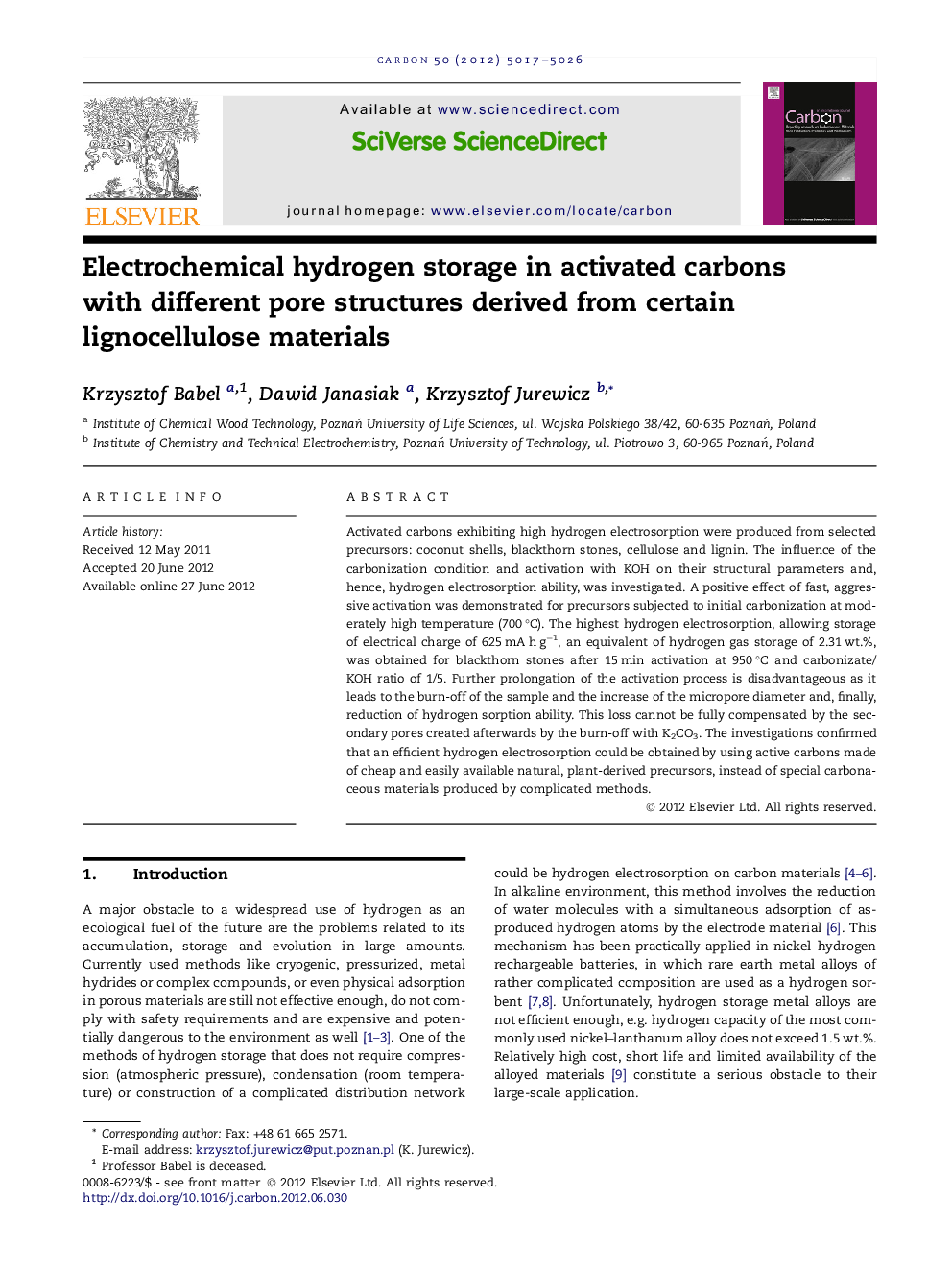| Article ID | Journal | Published Year | Pages | File Type |
|---|---|---|---|---|
| 10610442 | Carbon | 2012 | 10 Pages |
Abstract
Activated carbons exhibiting high hydrogen electrosorption were produced from selected precursors: coconut shells, blackthorn stones, cellulose and lignin. The influence of the carbonization condition and activation with KOH on their structural parameters and, hence, hydrogen electrosorption ability, was investigated. A positive effect of fast, aggressive activation was demonstrated for precursors subjected to initial carbonization at moderately high temperature (700 °C). The highest hydrogen electrosorption, allowing storage of electrical charge of 625 mA h gâ1, an equivalent of hydrogen gas storage of 2.31 wt.%, was obtained for blackthorn stones after 15 min activation at 950 °C and carbonizate/KOH ratio of 1/5. Further prolongation of the activation process is disadvantageous as it leads to the burn-off of the sample and the increase of the micropore diameter and, finally, reduction of hydrogen sorption ability. This loss cannot be fully compensated by the secondary pores created afterwards by the burn-off with K2CO3. The investigations confirmed that an efficient hydrogen electrosorption could be obtained by using active carbons made of cheap and easily available natural, plant-derived precursors, instead of special carbonaceous materials produced by complicated methods.
Related Topics
Physical Sciences and Engineering
Energy
Energy (General)
Authors
Krzysztof Babel, Dawid Janasiak, Krzysztof Jurewicz,
